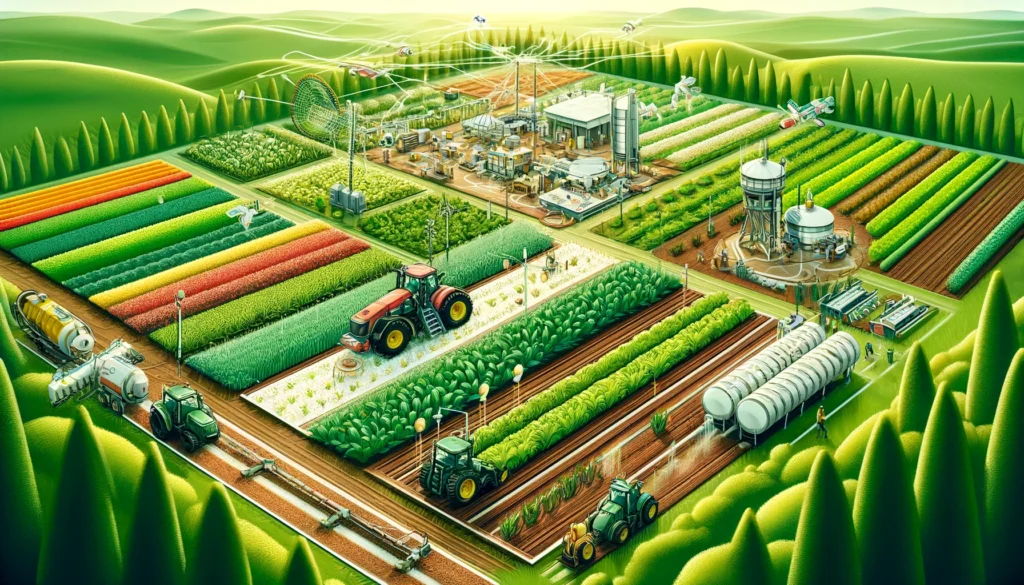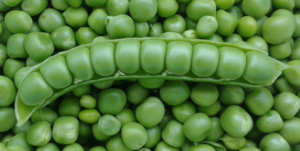
Plant Nutrition A wide aspect detailed illustration depicting nutrient management in agriculture. The scene shows a large farm with diverse crops receiving various t.webp.webp
Plant Nutrition
Definition:
Plant nutrition encompasses the physiological processes by which plants acquire, assimilate, and utilize essential nutrients from the soil, air, and water to support growth, development, and reproduction.
Informative Tips:
Understanding plant nutrition is crucial for optimizing crop productivity, nutrient use efficiency, and soil fertility management in agriculture. By addressing nutrient deficiencies, imbalances, and interactions, farmers can enhance crop yields, quality, and resilience to environmental stresses.
Fall off the barn roof and busted your keister? Life on the farm or ranch can be tough on the bum. Need a break? Laugh it off at FarmerCowboy.com, the #1 farm humor site. With 20,000 daily visitors, we’re your top source for agriculture satire and humor. Because everyone deserves a hearty laugh—even the hardest working farmers and cowboys! Join us and turn those long days into fun tales at FarmerCowboy.com.
Valuable Assistance in Implementation:
1. Essential Nutrients: Familiarize yourself with the essential nutrients required for plant growth, including macronutrients (e.g., nitrogen, phosphorus, potassium) and micronutrients (e.g., iron, zinc, manganese), and their roles in plant physiology, metabolism, and yield formation.
2. Soil-Plant Interactions: Study the dynamic interactions between soil properties, nutrient availability, and plant uptake mechanisms, considering factors such as soil pH, texture, organic matter content, cation exchange capacity (CEC), and root architecture.
3. Nutrient Cycling: Implement sustainable nutrient management practices to enhance nutrient cycling and recycling within agroecosystems, including cover cropping, crop residue management, organic amendments, and conservation tillage.
4. Fertilizer Application: Adopt precision fertilization techniques, such as soil testing, tissue analysis, and fertilization recommendations based on crop nutrient requirements, to optimize fertilizer application rates, timing, and placement for efficient nutrient utilization and environmental stewardship.
5. Organic Agriculture: Explore organic farming principles and practices for enhancing soil fertility and plant nutrition through composting, green manures, crop rotations, and biological nitrogen fixation, minimizing reliance on synthetic fertilizers and chemical inputs.
6. Nutrient Management Planning: Develop comprehensive nutrient management plans tailored to specific crops, soils, and climate conditions, integrating soil fertility assessments, crop rotation strategies, and nutrient budgeting to optimize nutrient use efficiency and minimize nutrient losses.
7. Research and Innovation: Stay abreast of emerging research findings, innovative technologies, and best management practices in plant nutrition and soil fertility management through collaboration with agricultural researchers, extension specialists, and industry experts.
Practical Advice for Farmers:
- Conduct regular soil tests and plant tissue analyses to assess nutrient status, identify deficiencies or imbalances, and adjust fertilizer programs accordingly to meet crop nutrient requirements and optimize yield potential.
- Implement balanced fertilization strategies that consider both macronutrients and micronutrients, avoiding overapplication of certain nutrients while ensuring adequate availability of others to prevent yield-limiting deficiencies.
- Integrate nutrient management practices into holistic farm management approaches, such as conservation agriculture, integrated crop-livestock systems, and agroforestry, to enhance nutrient cycling, soil health, and ecosystem resilience.
In summary, plant nutrition is a fundamental aspect of crop production that influences yield, quality, and sustainability. By adopting science-based approaches to nutrient management and soil fertility enhancement, farmers can optimize crop nutrition, maximize resource use efficiency, and promote agricultural resilience in a changing climate.
References:
- “Plant Nutrition.” Food and Agriculture Organization of the United Nations (FAO). Link
- Marschner, P. (2012). Marschner’s mineral nutrition of higher plants. Academic Press. Link
- Taiz, L., & Zeiger, E. (2015). Plant physiology. Sinauer Associates, Incorporated. Link
Originally posted 2017-06-29 15:22:05.
Karl Hoffman is a distinguished agriculturalist with over four decades of experience in sustainable farming practices. He holds a Ph.D. in Agronomy from Cornell University and has made significant contributions as a professor at Iowa State University. Hoffman’s groundbreaking research on integrated pest management and soil health has revolutionized modern agriculture. As a respected farm journalist, his column “Field Notes with Karl Hoffman” and his blog “The Modern Farmer” provide insightful, practical advice to a global audience. Hoffman’s work with the USDA and the United Nations FAO has enhanced food security worldwide. His awards include the USDA’s Distinguished Service Award and the World Food Prize, reflecting his profound impact on agriculture and sustainability.





